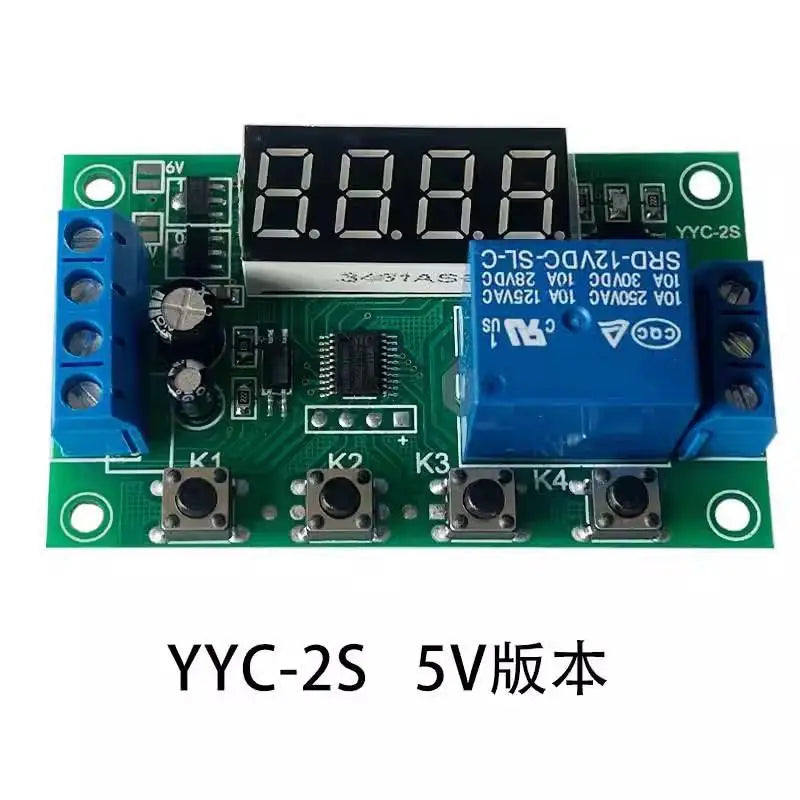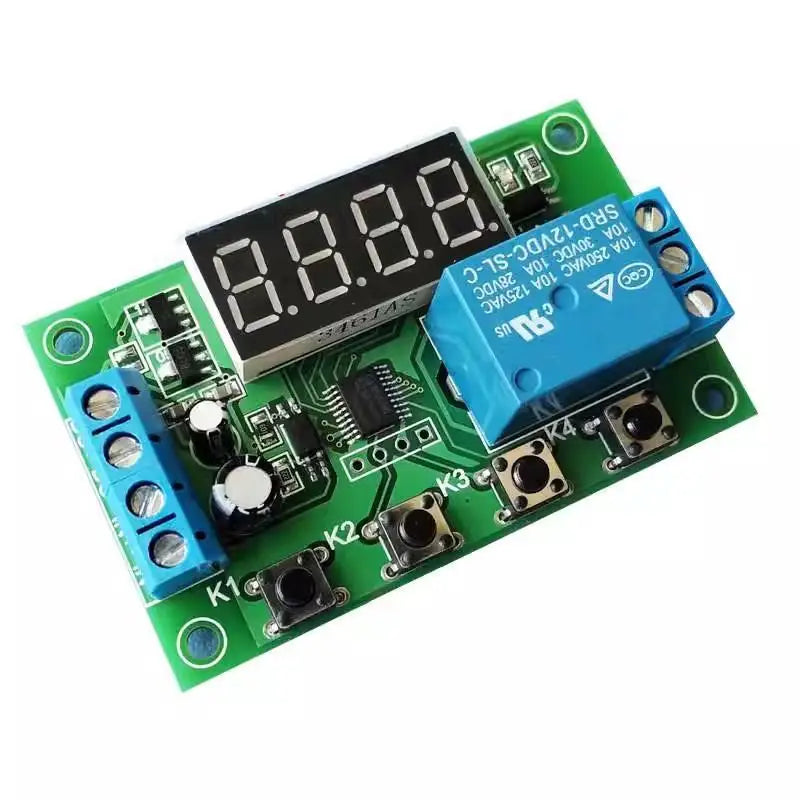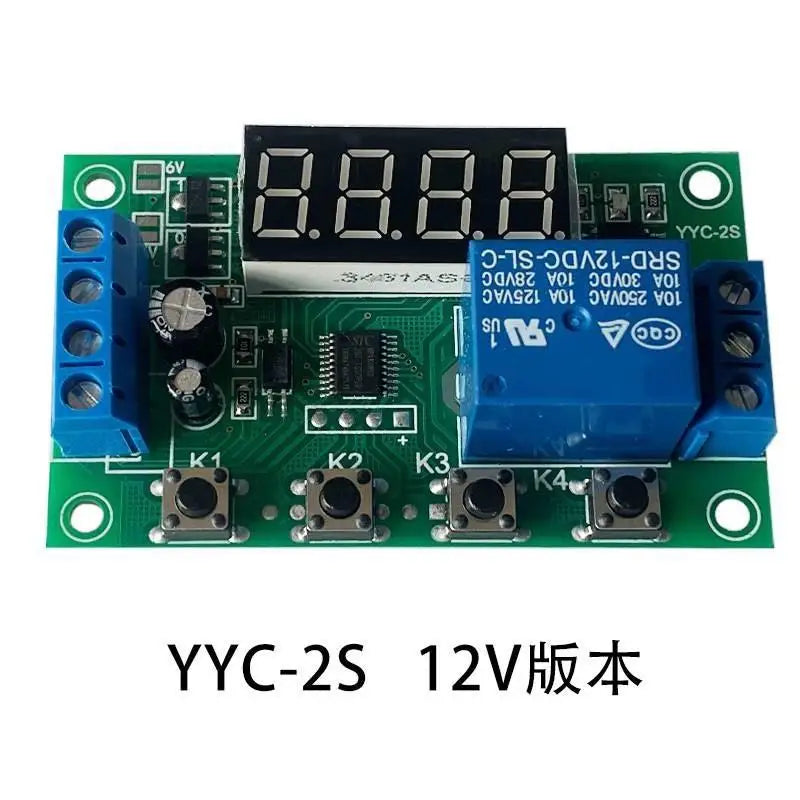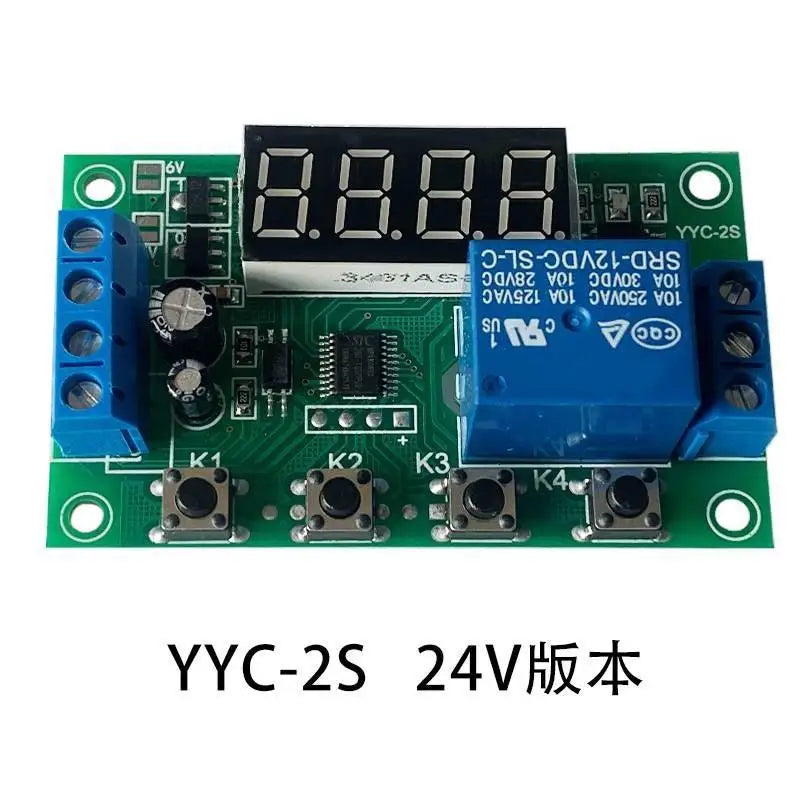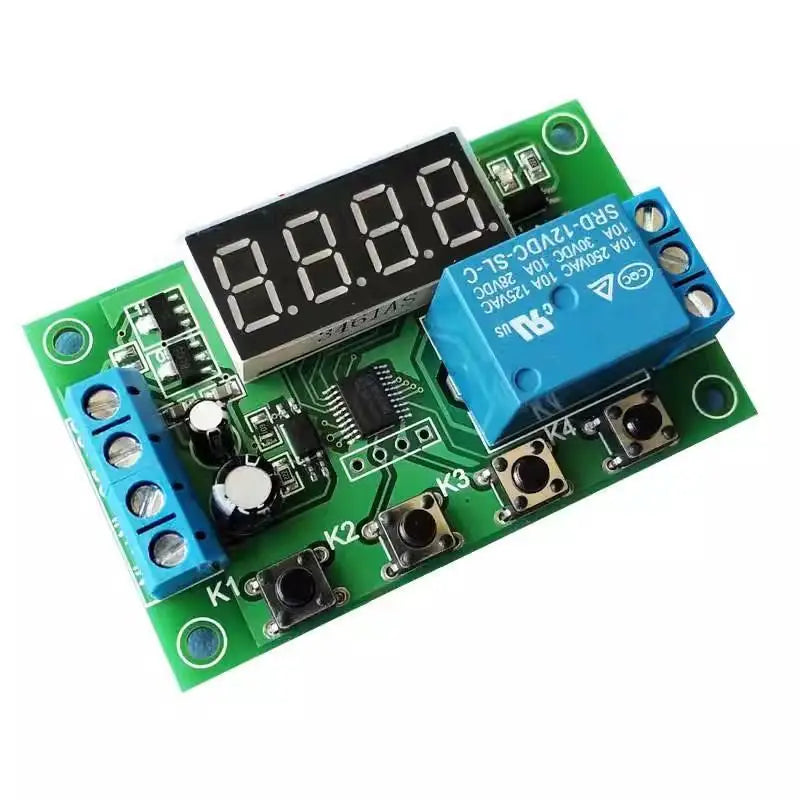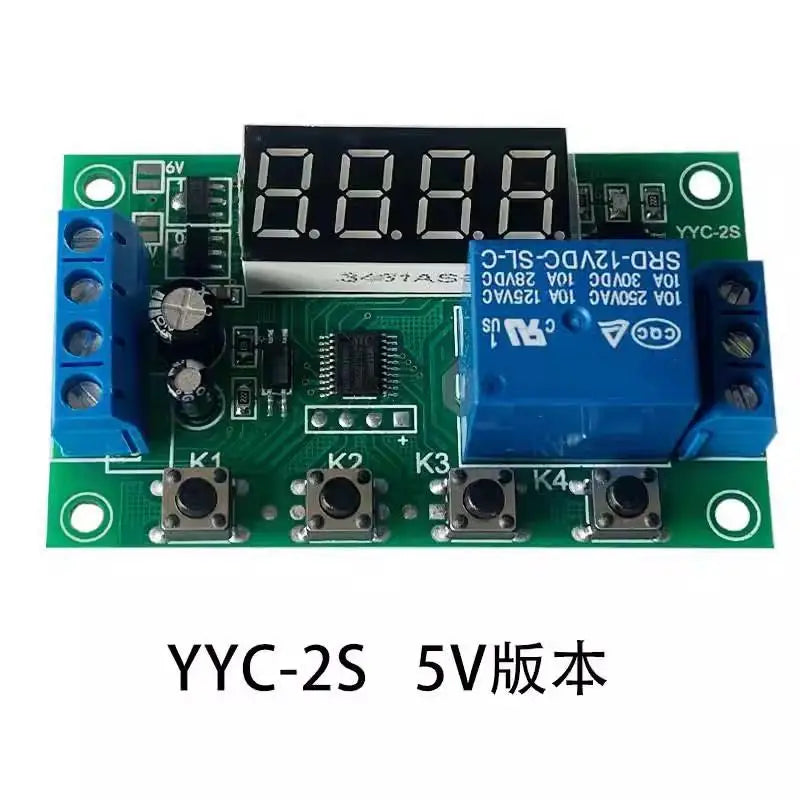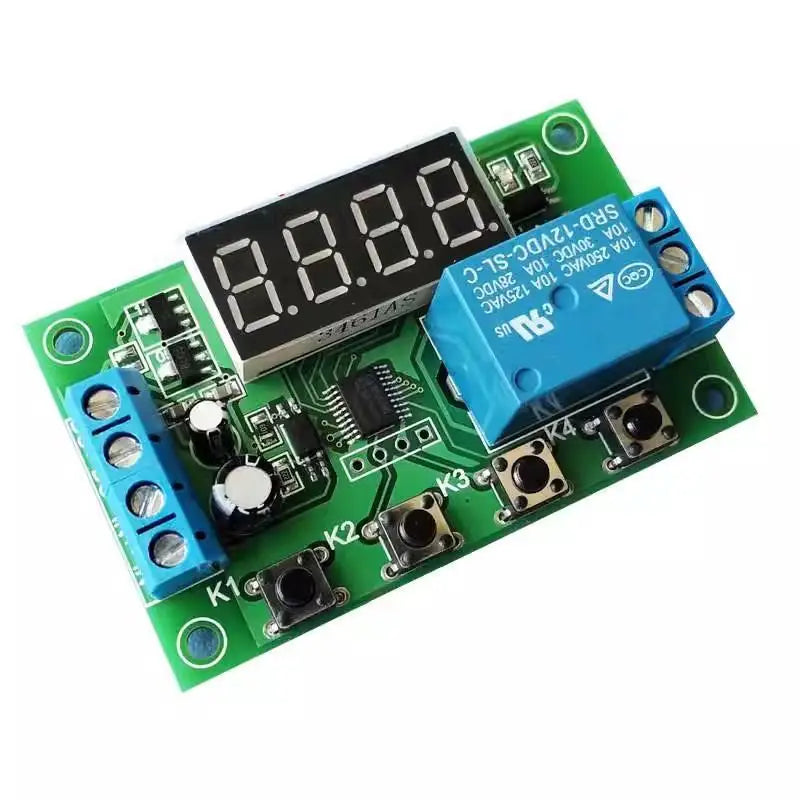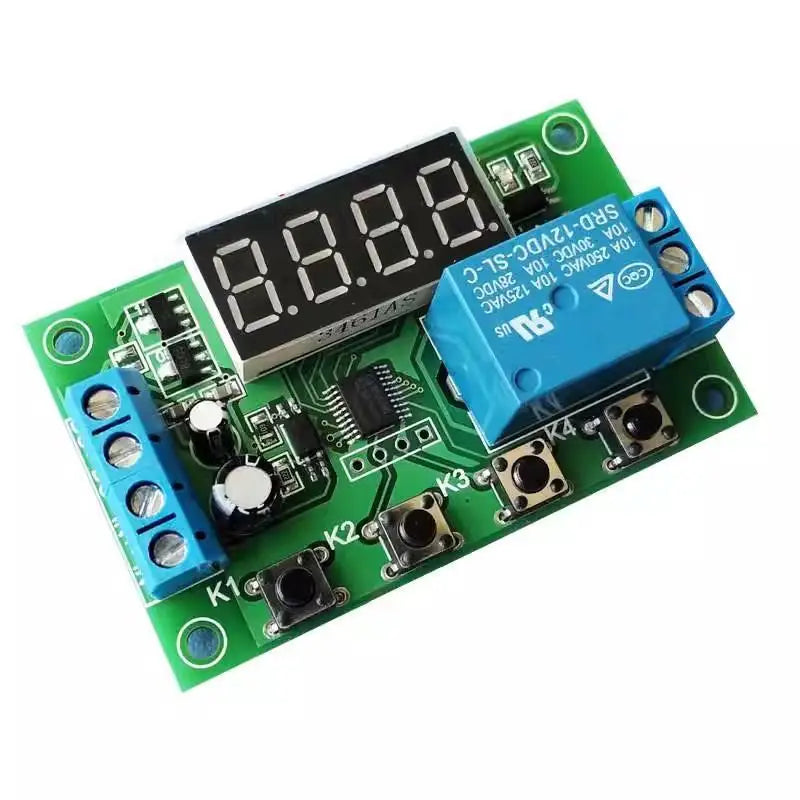Lonten Tech
Custom YYC-2S LED Display Adjustable Programmable delay time relay module 5V12V24V fixed time decoupling pulse cycle power off trigger
Custom YYC-2S LED Display Adjustable Programmable delay time relay module 5V12V24V fixed time decoupling pulse cycle power off trigger
Couldn't load pickup availability
Product Description
1. Product model: YYC-2S 24 common functions, to meet more application needs; can control solenoid valves, pumps, motors, lights, etc.
2. Output power: can control DC or AC load within 5A
3. Time range: 0.01 seconds to 999 minutes adjustable at any time
4. Wiring port description:
DC+ : Input DC power positive
DC- : Input DC power supply negative
IN+: positive signal input
IN-: signal input negative
NO: The relay normally open interface, the relay is suspended before the suction, and the short is connected with COM after the suction.
COM: Relay common interface
NC: The relay normally closes the interface, and the relay is shorted to COM before the suction is closed.
Button trigger: (positive trigger: DC- and in- short circuit, DC+ and IN+ button)
Or: (negative trigger: DC+ and in+ short circuit, DC- and IN- button)
5. Function list:
P-11: Jog (give the signal relay, the signal disappears and the relay stops)
P-12: Self-locking (send a signal relay to pull in, then give a signal relay to stop)
P-13: Give the signal, the relay will stop automatically for A seconds; the trigger will be invalid during the delay.
P-14: Give the signal, the relay will stop automatically for A seconds; trigger the retime during the delay.
P-15: Give the signal, the relay will stop automatically for A seconds; trigger the superimposed timing during the delay.
P-16: Give signal, the relay will stop automatically for A seconds; trigger reset during delay
P-17: Give the signal, the relay is closed, the input signal is disconnected, the power is turned off after A seconds, and the signal is kept output again during the delay.
P-18: After power-on, the relay will immediately pull in, after a delay of A seconds, the power will be turned off;
P-21: Give the signal, after a delay of A seconds, the relay pulls in
P-22: Give signal, after more than A seconds, the relay pulls in, the signal disappears, the relay stops.
P-23: After the signal disappears for more than A seconds, the relay is closed, there is a signal, and the relay stops.
P-24: There is a signal. After more than A seconds, the relay is closed. After the signal disappears for more than A seconds, the relay stops.
P-25: There is a signal after more than A seconds, the relay is closed, and after a signal exceeds A seconds, the relay stops.
P-26: There is a signal. The relay stops after A seconds of suction. The signal disappears and the relay stops again for A seconds.
P-27: The pulse signal is detected, the relay stops; if there is no pulse signal, the relay delays for A seconds; (the signal is continuous or the signal disappears as no pulse signal)
P-28: After power-on, after a delay of A seconds, the relay pulls in until the power is turned off.
P-31: After power-on, the relay is closed for A seconds, disconnected for B seconds, infinite loop;
P-32: Signal, start P-31 infinite loop; signal disappears, terminate loop
P-33: Give a signal, start P-31 infinite loop; give another signal to terminate the loop
P-34: After power-on, after a delay of A seconds, the relay pulls in and closes after B seconds.
P-35: There is a signal. After a delay of A seconds, the relay pulls in and closes after B seconds.
P-36: There is a signal. After more than A seconds, the relay pulls in, the B is stopped after B seconds, the signal disappears, and the timing is cleared.
P-37: There is a signal, the relay will stop automatically for A seconds, and then stop for 24 seconds. The signal trigger is invalid during A+B time.
P-38: There is a signal, the relay will stop automatically for A seconds, stop and re-clock for B seconds, and then automatically close for A seconds.
P-41: There is no signal; the signal disappears; the relay works after the delay of A time.
P-42: The signal disappears, after a delay of A time, the relay works; the end of work B time
P-43: The signal disappears. After the A time, the relay works; the working B time ends.
P-44: After power-on, the relay works for A time and stops B time; the cycle stops automatically for C times.
P-45: The power is not activated, after the signal is given; the relay works for A time, the B time is stopped; the cycle C stops automatically; the signal is given again, once again
P-46: After the signal is sent for more than A times, the relay is closed; the suction is kept; the power is stopped.
P-47: After the signal is sent for more than A times, the relay is closed for B seconds.
P-48: In C seconds, after the signal is continuously sent for more than A times, the relay is closed for B seconds.
6. Button setting description: Power-on display "----" means to enter standby mode;
Press K1 for the first time (it takes more than 1 second to be effective to prevent false triggering) Display: P -11: K2 adjusts the main mode, K3K4 adjustment function
Press the second time K1, the screen displays: A001: K2 and K3 adjust the first time A, K4 adjust the decimal point (time unit)
Pressing the third K1, the screen displays: B001: K2 and K3 adjust the second time B, K4 adjusts the decimal point (time unit)
Pressing K1 for the fourth time, "----" means to enter standby mode.
Press K4 in standby mode to permanently turn off/on the display and switch the low power mode.
7. Decimal time unit description:
X.XX decimal point in hundred, timing range: 0.01 seconds to 9.99 seconds
XX.X decimal point in ten, timing range: 0.1 seconds to 99.9 seconds
XXX has no decimal point, timing range: 1 second ~ 999 seconds
XXX. The decimal point is in one place, the time range is from 1 minute to 999 minutes.\
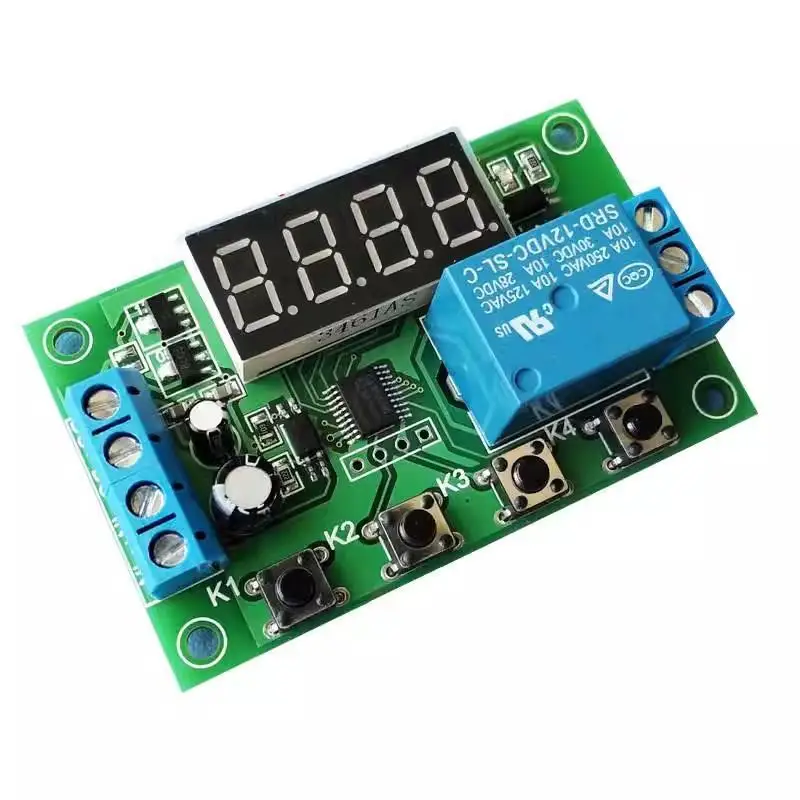
Share
